White bloom on indoor plants: causes, types and methods of control
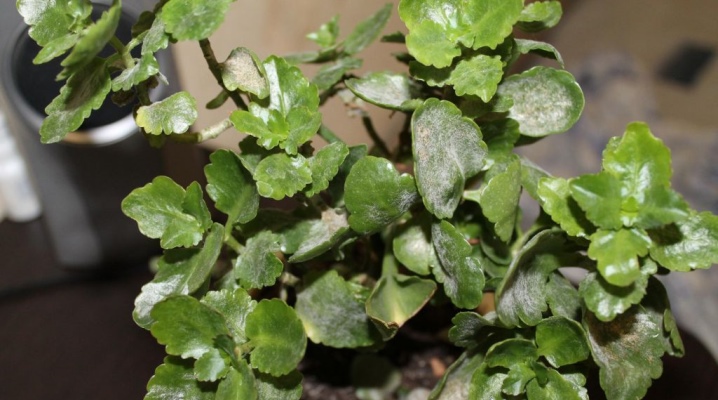
Growing indoor plants is a very exciting experience. Flowers can transform even the most unassuming interior and turn a room into a real oasis. Unfortunately, it happens that green pets run into problems. One of the most common is white bloom on leaves and substrate.
In our article, we will dwell in more detail on the reasons for its appearance and methods of treating plants for this ailment.

Features of the disease
The fungus lives in almost all pots with indoor plants, but its pathogenic activity is far from always manifested. If a green pet is kept in comfortable conditions, provided with all the necessary micro and macro elements, then he is not afraid of diseases. But there are situations when the fungus begins to multiply actively:
- if the room is kept at a low temperature at the level of 10-15 degrees;
- with excessive air humidity, excessive watering and stagnation of water in the container;
- when the substrate is oversaturated with nitrogen-containing fertilizers;
- when the plant is too cramped in the pot;
- if the flower is rarely watered, the earthen coma is brought to dryness, and then abundantly watered;
- any fungal infections spread very quickly and can infect other plants located nearby:
- when you touched a diseased bush, and then touched a healthy one;
- if powdery fungal microorganisms have got into the water intended for irrigation;
- with the movement of air masses - the fungus is able to move even through the air.
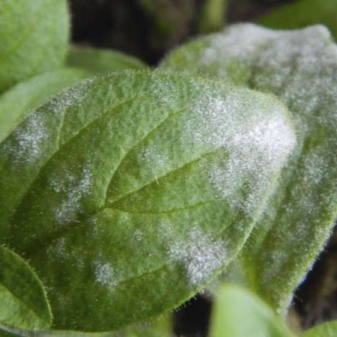
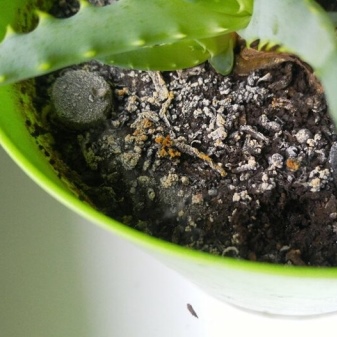
Often, plants at home encounter insect pests - their pathogenic activity also often leads to the appearance of spots and plaque on plants.
Causes of the onset of the disease
In most cases, white bloom on the leaves of indoor plants indicates their powdery mildew... It is caused by a microscopic fungus that enters the house with pet hair, on people's clothes and shoes. There are also known cases of infection through new land or store-bought plants.
The mycelium spreads with great speed, it parasitizes on the green parts and sucks out the life juices of the flowercausing the premature death of the culture. At the initial stage of infection, small spots appear - these are traces of spores. Gradually, they grow and completely cover the plant. Over time, the white markings change their color to rusty brown - after that the leaves dry out very quickly and die off along with the buds.
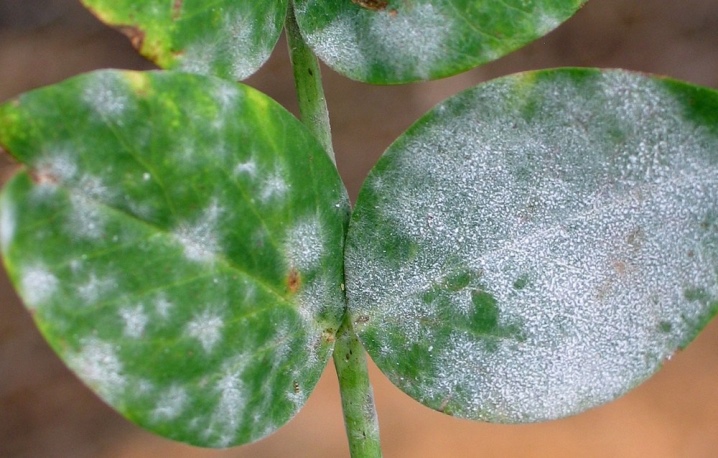
The most sensitive to powdery mildew are crops such as:
- Kalanchoe;
- begonia;
- ficus.
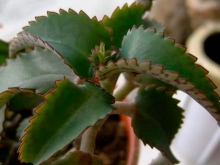
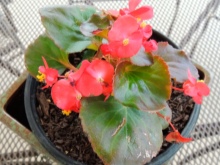
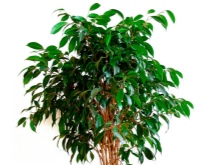
If you do not prevent the growth of myceliums at an early stage of the lesion, then the green pet will die in just a matter of days.
Most often, powdery mildew develops in rooms with high humidity.
Another common cause of white bloom is the mealybug. It is a microscopic parasitic insect. It is not difficult to notice it - at first the plant looks like it was sprinkled with flour, and soon the surface of the leaf plates becomes sticky.
Depending on the plant, the mealybug can manifest itself in different ways:
- on the surface of the dracaena, it causes a sticky bloom, in the absence of surgical treatment, the leaves begin to fall off profusely;
- the orchid deforms young shoots and buds;
- on the money tree, plaque accumulates in the axils of the leaves in the form of small lumps;
- in violets, the root system is first damaged, and only then the worm moves to the green parts of the plant.
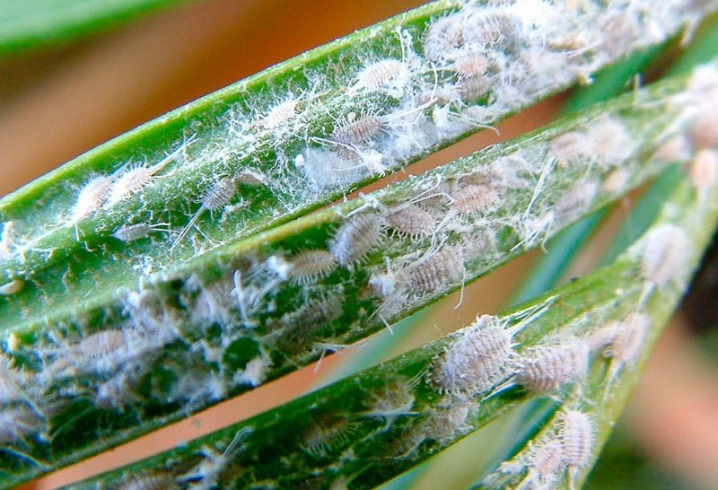
Rarely, aphids can cause whitish plaque. On a healthy plant, such a parasite is almost invisible, while the affected area dries up and falls off rather quickly. The fact is that aphids suck out all the juices from the plant, thus depriving it of the nutrients necessary for growth and development. If you do not get rid of the insect in time, then the death of the green pet will occur as soon as possible.
Often, white bloom does not appear on the green parts of the plant, but on the substrate. It can be caused by a special type of fungal mold, which is typical for indoor plants, or efflorescence, that is, salt deposits. Both are detrimental to domestic plants, especially young ones, since both microorganisms and an excess of salts lead to the death of the entire root system.
The reasons for the appearance of such problems can be:
- excessive watering - it creates an environment favorable for the reproduction of pathogenic microflora.
- Too dry indoor air - it does not cause mold growth, but it causes the substrate to dry out, as a result, salt begins to protrude onto the surface of the soil.
- Too large a pot - in this case, the roots of the flower do not reach the lower layers of the earth and do not take water from there. Thus, moisture stagnates in the container and ideal conditions are created for the activation of fungi.
- White spots may also indicate that the soil in the container is infested with sciarids - mushroom mosquitoes. If there are too many of them, then it is better to transplant the flower into a new land.

Treatment of different types of plaque
Features of the treatment of white plaque directly depend on the source of the lesion.
Mold
If the mold appears only in the upper layer of the earth, it must simply be removed with a spoon and replaced with a new, disinfected one.
If the scale of the lesion is larger, then the plant will need a transplant. To do this, it is removed, the roots are washed, treated with a weak solution of potassium permanganate, dried and transferred to a new pot with a new substrate. After carrying out these operations, the earth can be sprinkled with cinnamon or soda.
If mold spots appear on the leaves, wipe them with a soft sponge. After treatment, the plant is sprayed with any fungicidal solution - it is advisable to carry out these operations outdoors.
Please note that any mold can be inactive and active. If, after wiping the surface, stains remain, then most likely you are in front of a lesion with an active fungus. In this case, all diseased flower fragments must be cut and destroyed. It is almost impossible to remove mold that has penetrated deep into green tissues.

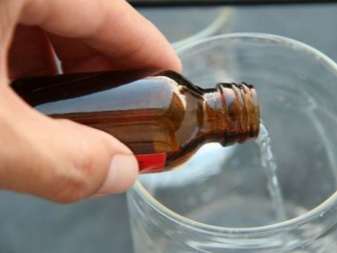
Sticky
The appearance of a sticky white bloom and sweet drops indicates the defeat of mealybugs and some species of aphids.
The stickiness of the leaf is a very alarming signal, and you need to deal with the problem as early as possible.
- Using a cotton pad dipped in alcohol, it is necessary to carefully collect all the insects by hand. After the physical elimination of the worm, the plant should be sprayed with a fungicide. It is best to use "Aktara" or "Actellik" products.
- At the end of the treatment, you should wipe the window sill and the window near the place where the sick pet stood with a fungicidal solution, because there is a high probability that the worm lives there as well.
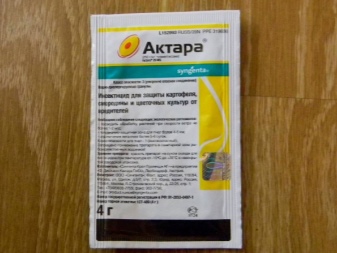
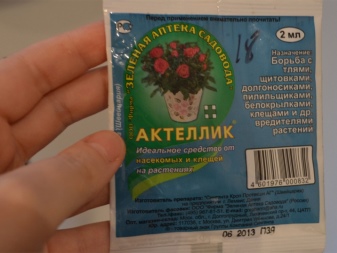
Please note that a one-time treatment is unlikely to alleviate the condition of the flower.
In most cases, all manipulations have to be carried out at least 3 times with an interval of 5-7 days.
To treat a diseased plant, only undiluted alcohol should be used - it quickly evaporates, therefore it does not burn the leaf plates.A diluted alcohol-containing liquid stays on the plate longer, and therefore can cause significant harm to the culture.
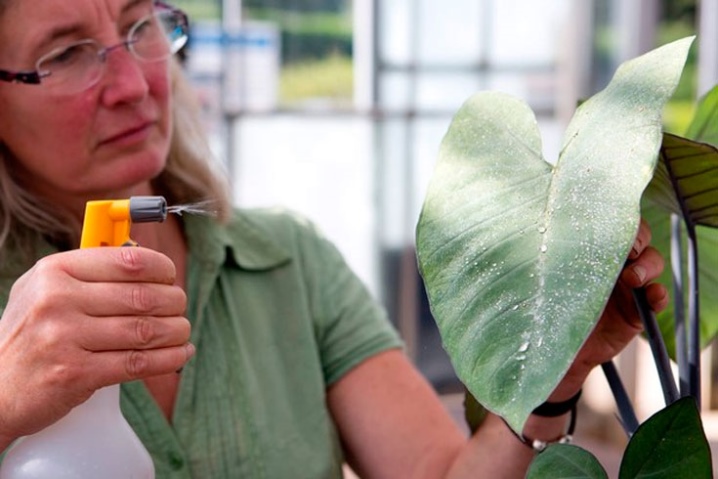
Gray rot
The first sign of rotting is a silvery-gray fluffy bloom, which over time turns directly into rot. If an infection occurs, the flower should be immediately isolated from other indoor plants. If the lesion has affected more than 40% of the plant, it will have to be destroyed - unfortunately, no cure for gray rot has been created to date.
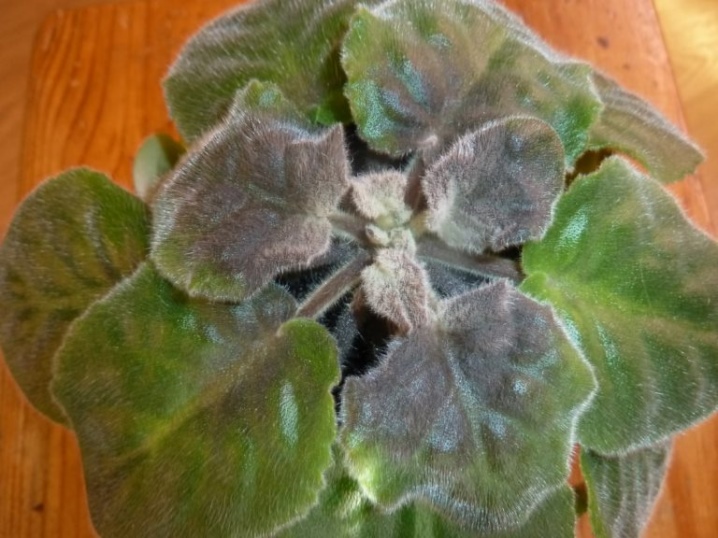
Powdery mildew
You can get rid of powdery mildew only in the early stages. During this period, the most effective solution of potassium permanganate, compiled at the rate of 1.5 g of permanganate per bucket of water. This composition should be sprayed on the diseased plant.
In the fight against powdery mildew, the mullein has proven itself well. To prepare a medicinal solution, it is mixed with water in a ratio of 1 to 3 and insisted for three days. After 72 hours, the solution is filtered and added with water so that the total volume of the liquid increases 3 times. As a rule, the result is noticeable after the second spraying.
The most popular folk remedy for fungus is onion peel. It is mixed with water (200 g per 10 l), brought to a boil over low heat and insisted for about a day.
If the spots have a white-yellowish tint on top of the foliage of the plate, and below it is grayish-purple, then most likely you are dealing with downy mildew. In this case, copper-containing preparations will be effective.
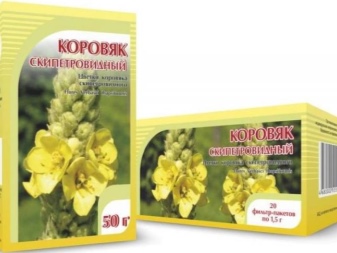

Similar to cotton wool
Cotton wool is the first sign of mealybug infestation. You can treat a sick pet with affordable folk remedies:
- calendula powder is brewed as tea at the rate of 100 g per 1 liter of water and the plant is sprayed from a spray bottle;
- the garlic is crushed, poured with boiling water and infused for about 4-5 hours, after which the leaves are treated with the resulting solution with a soft sponge;
- 2 tbsp. l. natural olive oil is diluted in 1 liter of water and sprayed with the damaged plant.
If none of the above methods gave the desired result, then the lesion has eaten deep into the tissue. In this case, only chemicals can help. The most effective means are "Decis", "Tsvetofos", "Fitoverm", as well as "Bi-58". They must be used in strict accordance with the instructions and taking precautions. If possible, try to do the treatment outdoors. If you are forced to work during the cold season, be sure to remove children and pets from the premises.
Regardless of the reason for the appearance of white bloom, the diseased plant must be immediately quarantined away from other flowers. Any treatment must be repeated at least 3-4 times.
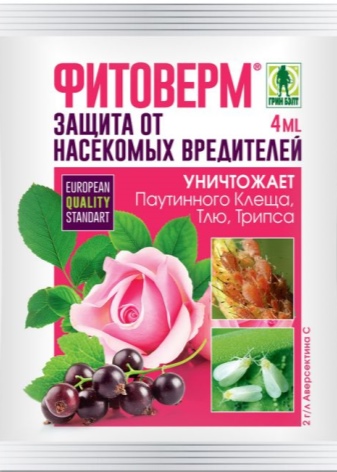
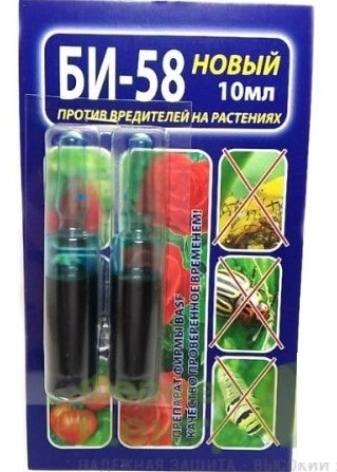
On the ground
White spots on the soil are a pathology, and in order to fight it, first of all, you should determine the reason, and then take measures to revive the culture:
- if the problem is an overabundance of trace elements, their composition and quantity should be revised;
- in the case when efflorescence appeared due to the use of hard water, it must be softened;
- if a mushroom gnat is found, treatment with a solution of potassium permanganate will help.
Apple cider vinegar will get rid of all other pests.

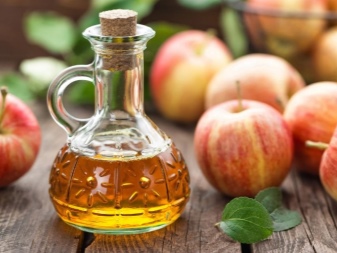
All of the above measures are effective only in the early stages of the disease, but if the lesion is large, the only correct solution will be a culture transplant.
Preventive measures
As you know, the disease is easier to prevent than to cure - and this statement fully applies to indoor plants. For to prevent the appearance of white plaque, you need to follow simple prevention methods:
- periodically renew the soil - a complete replacement is carried out 1 time in 3 years, the top layer of the earth is changed annually;
- observe the optimal irrigation regime - frequent irrigation leads to the appearance of fungi and mold;
- for the purpose of prevention, you can sprinkle plants with special preparations - "Fitoverm" or "Aktara" every spring. "Actellik" is unsuitable for these purposes, since it has a rather severe effect.
Many growers use flea pet shampoos to treat green pets.
If the efforts made did not help, and your plant still encountered a white bloom, you should not despair. With timely treatment started, you can get rid of the problem quickly and without consequences.
How to get rid of white plaque in a pot, see the video.































The comment was sent successfully.